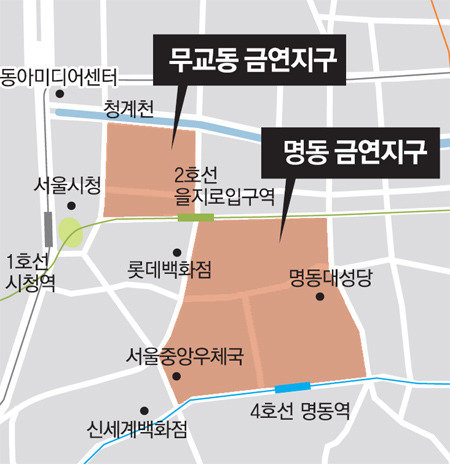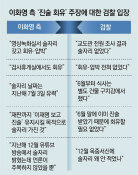Seoul's Myeongdong and Mugyodong to be designated as non-smoking areas
Seoul's Myeongdong and Mugyodong to be designated as non-smoking areas
Posted February. 03, 2016 07:33,
Updated February. 03, 2016 07:41

The Seoul Metropolitan Government said Tuesday that during the first half of this year Myeong-dong and Mugyo-dong ranging from Euljiroipgu Station to Euljiro 2ga intersection, to Gwangyo intersection to City Hall intersection, will be pilot designated as outdoor non-smoking areas. Both areas are key places in northern Seoul congested with retail stores and office buildings.
The newly designated non-smoking districts are different from existing non-smoking places. Currently, Seoul City and its district offices designate certain facilities including bus stations, entrances to subway stations and public plazas as outdoor non-smoking places. However, this has failed to reduce damages from indirect smoking, which is the very purpose of designating non-smoking areas.
According to an online poll of Seoul residents, indirect smoking experiences rate was 86.1 percent in 2012 when there were 3,000 non-smoking areas, but surged to 91.1 percent in 2014 despite the number surging to 10,000 places. This is because smoking is possible when a person gets away from non-smoking areas.
Currently, there are 13,434 non-smoking places in Seoul, but it is easy to see people walking in streets smoking. Against this backdrop, there have been increasing calls to designate the entire areas with many floating population as non-smoking places.
The new non-smoking areas will ban smoking not only in nearby buildings and other facilities but also in all places. Smoking while walking will also strictly be restricted.
Instead, 30-square-meter smoking booths will be installed within these non-smoking areas. Non-smokers will be free from indirect smoking if they avoid these places, while smokers can at the same time enjoy their rights.
Such policies have proven as effective in Japan. In 2001, a man was smoking in a street in Chiyoda, Tokyo when the sparks from the cigarette went into a child's eye making the child lose eyesight. This stirred massive anti-smoking sentiment among Japanese people on street smoking.
Since then, Japan has toughened street smoking and imposes 20,000 yen in penalty against people smoking in city streets. Yet, the country installed smoking booths within a five-minute reach. This policy has reduced indirect smoking damages significantly.
The Seoul City government plans to expand the plan to the broader city if its latest policy proves to be effective. "We will be pilot running two non-smoking areas this year and expand to 20 others including Jongno, Namdaemun and Yeoksam-dong by 2018," a city official said.
황태호기자 taeho@donga.com







